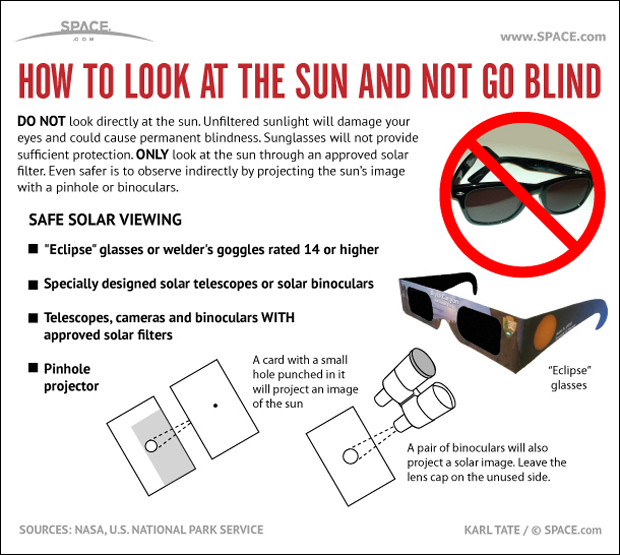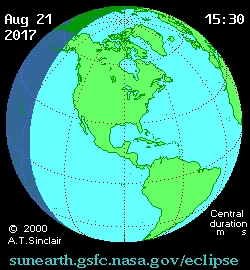El Paso, TX
Weather Forecast Office
According to NASA a total solar eclipse is moon passes between the sun and Earth and blocks all or part of the sun for up to about three hours, from beginning to end, as viewed from a given location. For this eclipse, the longest period when the moon completely blocks the sun from any given location along the path will be about two minutes and 40 seconds. The last time the contiguous U.S. saw a total eclipse was in 1979.

Looking directly at the sun is UNSAFE except when the moon entirely blocks the sun’s bright face, which will happen only within the narrow path of totality.
The only safe way to look directly at the partially eclipsed sun is through special-purpose solar filters, such as “eclipse glasses” or hand-held solar viewers. Homemade filters or ordinary sunglasses, even very dark ones, are NOT SAFE for looking at the sun.
To date four manufacturers have certified that their eclipse glasses meet the ISO 12312-2 international standard. These are Rainbow Symphony, American Paper Optics, Thousand Oaks Optical, and TSE 17.
​
Graphic: https://www.space.com/36941-solar-eclipse-eye-protection-guide.html
Learn how to make a Pinhole Projector HERE
Blue Line: Center of Totality
Red Lines: Northern and Southern Boundaries of Totality
Eclipse: Who? What? Where? When? and How?
Current Hazards
Outlooks
Hazardous Weather Outlook
Local Storm Reports
Public Information Statement
National
Heat Risk
Current Conditions
Satellite
Drought Monitor
Holloman AFB Radar
Regional highs/lows/precip
El Paso Radar
Rivers and Lakes
Local Observations
Forecasts
Forecast Discussion
Graphical Forecast
Hourly Forecast
Activity Planner
Fire Weather
Aviation Weather
Climate
El Paso Climate Data
Santa Teresa Climate Data
Monthly Weather Digest
Climate Graphs
Climate Prediction
Storm Events Database
US Dept of Commerce
National Oceanic and Atmospheric Administration
National Weather Service
El Paso, TX
7955 Airport Rd
Santa Teresa, NM 88008
(575) 589-4088
Comments? Questions? Please Contact Us.


